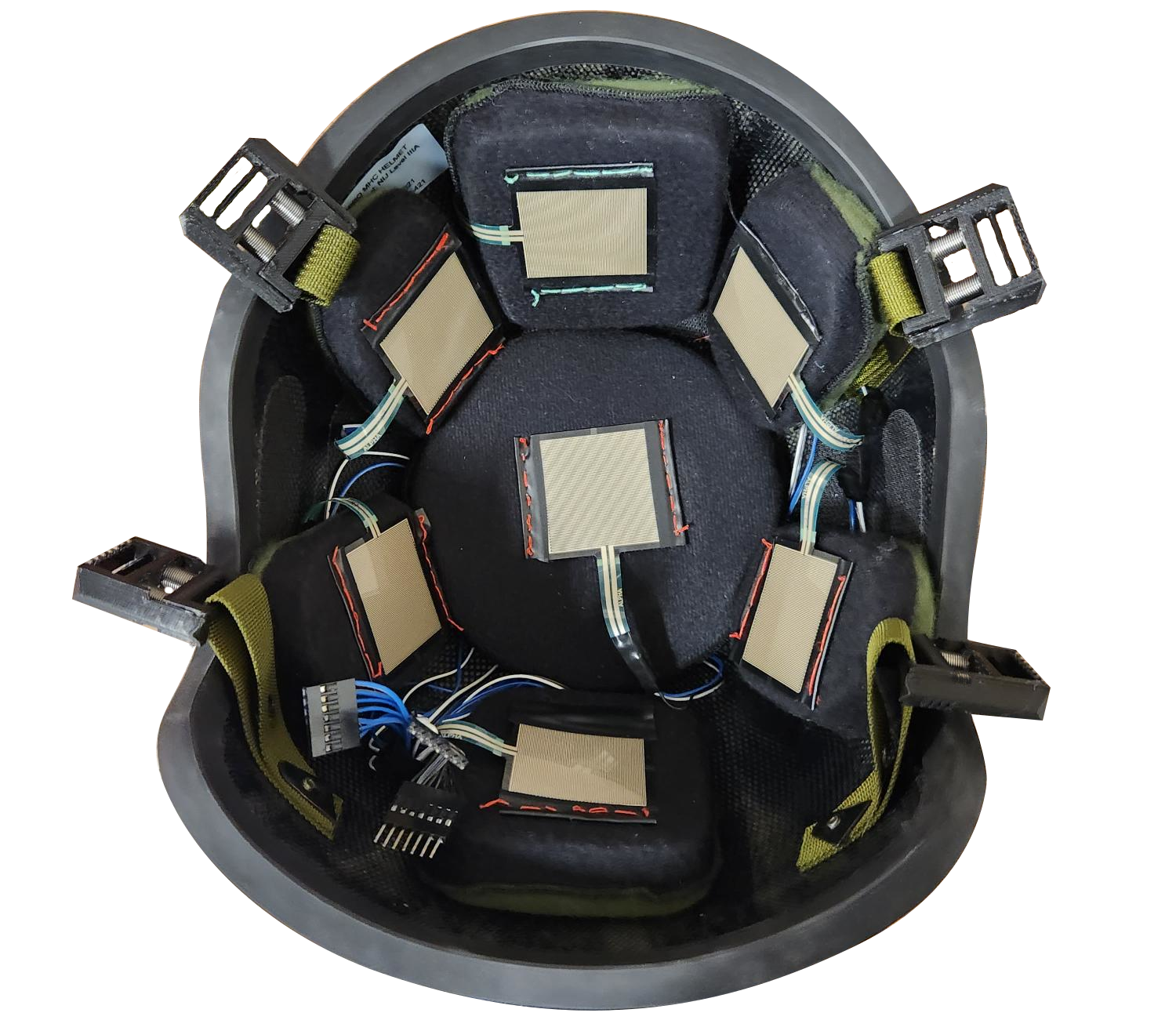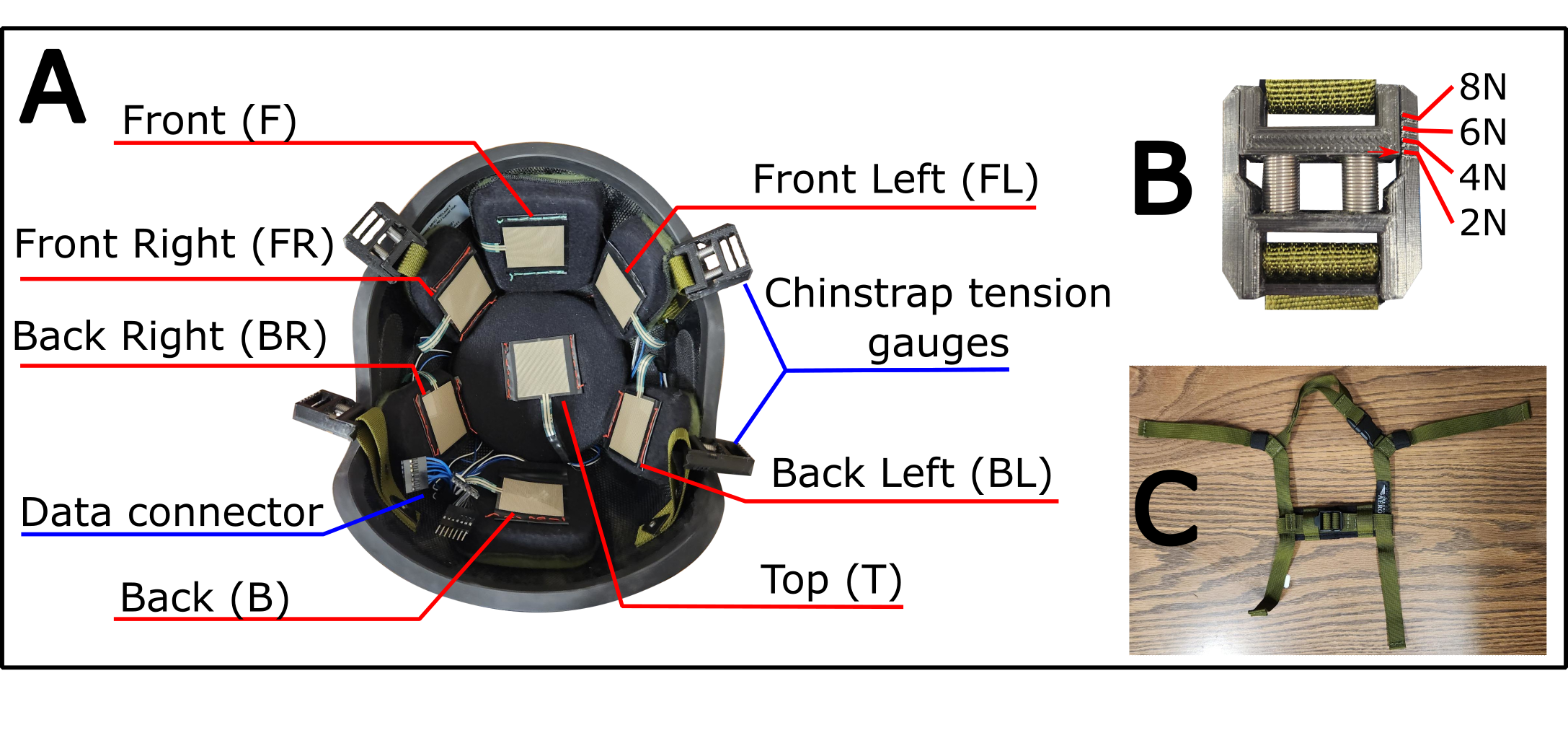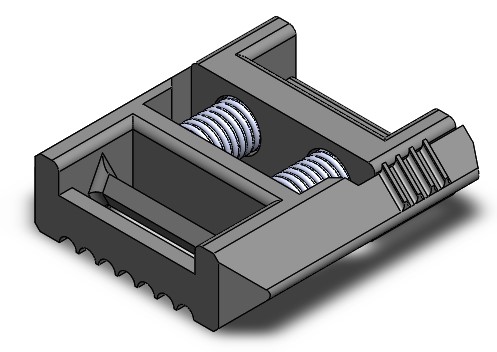Helmet Fit Measurement System

Objective and outcomes
The objective of this measurement system was to characterize population variation in head-to-helmet contact forces. Existing studies had limited reproducability and small sample sizes, and all known studies had been performed with an exclusively male study population. In order to generate realistic initial fit conditions for computational impact models, we needed fit data from a truly representative population.
This system enabled the creation of the largest dataset of helmet fit to date, showing that helmet fit is highly non-uniform and varies significantly with biological sex and level of experience. Data collected using this test system was published in the Annals of Biomedical Engineering. This project highlights my ability to design and manufacture equipment for measuring human-device interaction.

System overview
System requirements
- The measurement systems needed to integrate with an existing helmet system patterned off of the U.S. Army Advanced Combat Helmet.
- The system needed to measure contact force on a compiant foam pad surface.
- The system needed to be able to relate the contact force on the top of the head to how tight the chinstrap was fastened.

Helmet chinstrap tension gauge
Key features
- Each interior pad was instrumented with a low-profile force sensitive resistor, collecting data using an Arduino Mega.
- The force sensitive resistors were calibrated using a custom calibration curve, derived by applying a known force to the sensor using a curved surface which mimicked the curvature of the scalp.
- A chinstrap tension gauge was designed which replaced the original helmet buckles and measured chinstrap tension via deformation of two springs.
